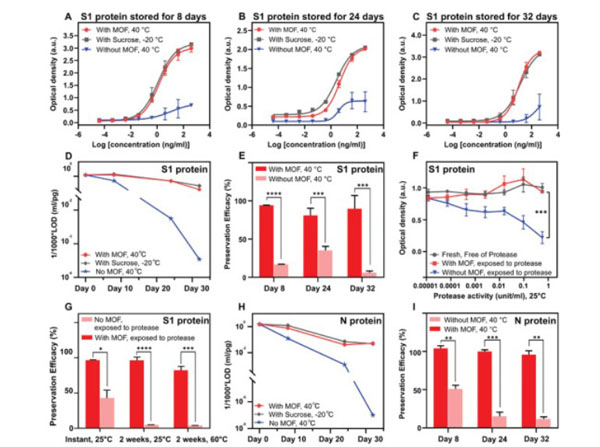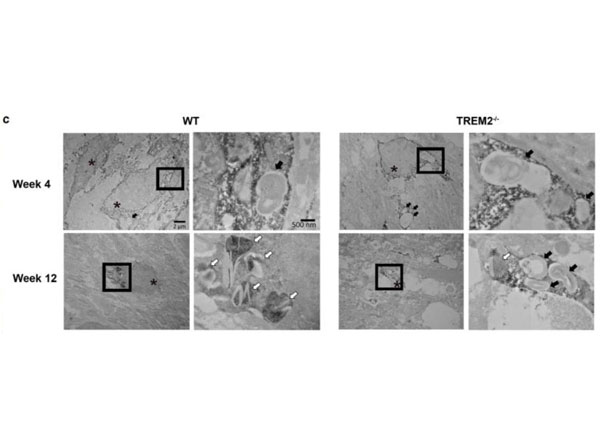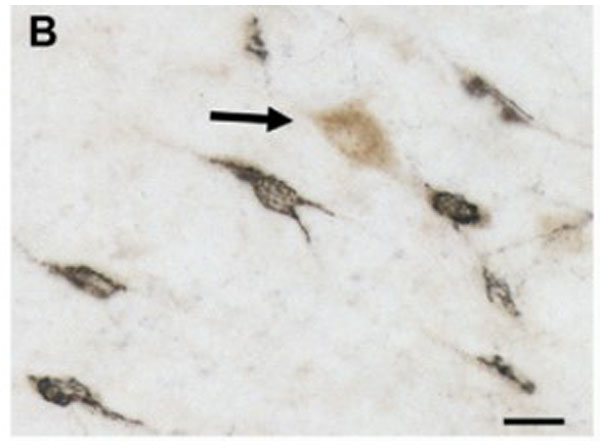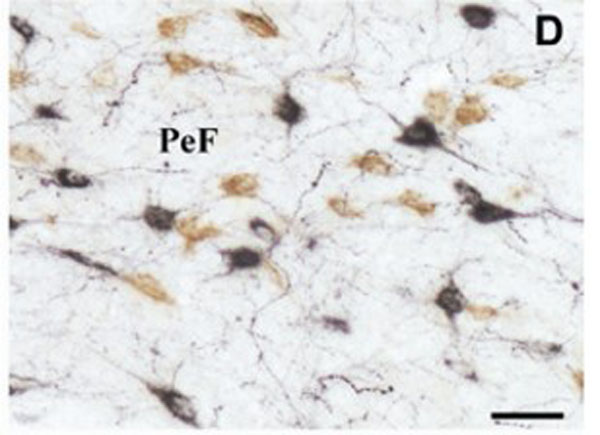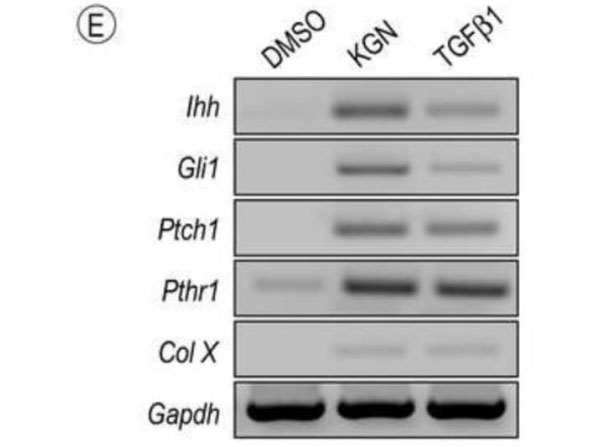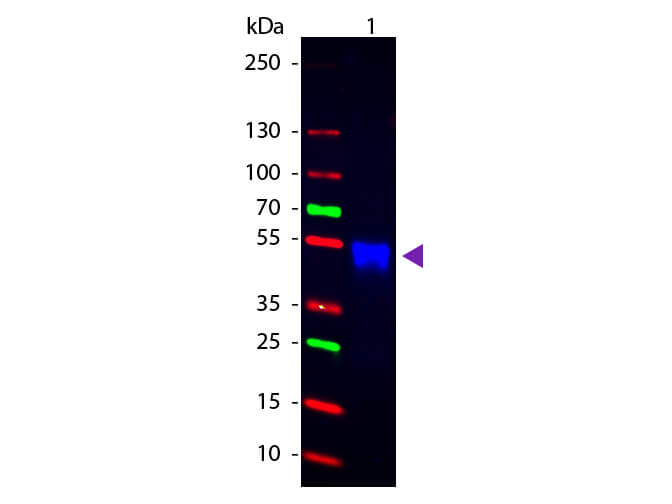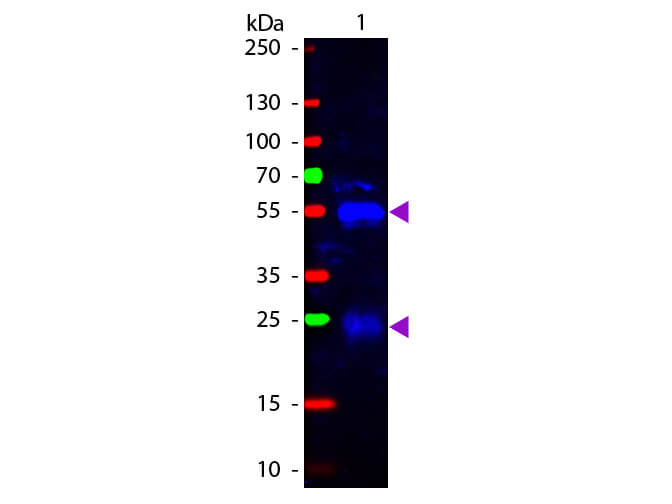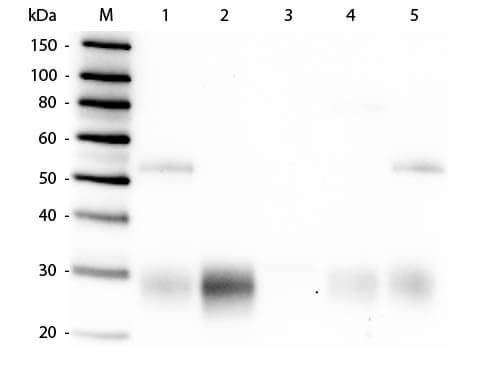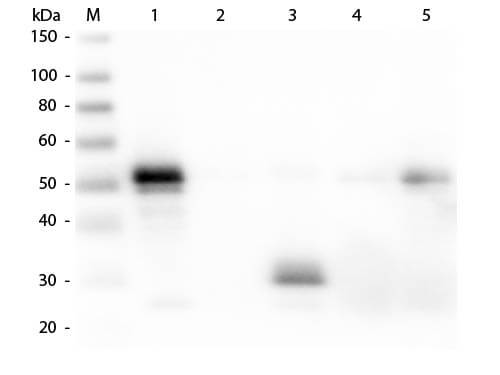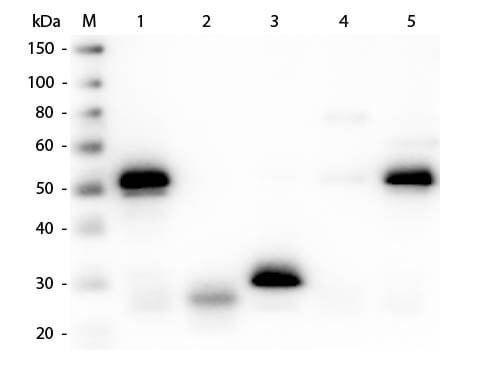Datasheet is currently unavailable. Try again or CONTACT US
Rabbit IgG (H&L) Antibody Biotin Conjugated
Donkey Polyclonal
6 References
611-7602
2 mg
Lyophilized
ELISA, IHC, EM
Rabbit
Donkey
Shipping info:
$50.00 to US & $70.00 to Canada for most products. Final costs are calculated at checkout.
Product Details
Donkey Anti-Rabbit IgG (H&L) Antibody Biotin Conjugated - 611-7602
Donkey anti-Rabbit IgG Biotin Conjugated Antibody, Donkey anti-Rabbit IgG Antibody Biotin Conjugation
Donkey
IgG (H&L)
Biotin
Polyclonal
IgG
Target Details
Rabbit
Rabbit IgG whole molecule
This product was prepared from monospecific antiserum by immunoaffinity chromatography using Rabbit IgG coupled to agarose beads followed by solid phase adsorption(s) to remove any unwanted reactivities. Assay by immunoelectrophoresis resulted in a single precipitin arc against anti-biotin, anti-Donkey Serum, Rabbit IgG and Rabbit Serum.
Application Details
ELISA
EM, IHC
- View References
Anti-Rabbit IgG (H&L) Biotin Antibody has been tested by ELISA and is ideal for ELISA, western blotting, Immunohistochemistry, Fluorescence Microscopy, Flow Cytometry as well as other antibody detection methods.
Formulation
2.0 mg/mL by UV absorbance at 280 nm
0.02 M Potassium Phosphate, 0.15 M Sodium Chloride, pH 7.2
0.01% (w/v) Sodium Azide
10 mg/mL Bovine Serum Albumin (BSA) - Immunoglobulin and Protease free
1.0 mL
Restore with deionized water (or equivalent)
Shipping & Handling
Ambient
Store vial at 4° C prior to restoration. For extended storage aliquot contents and freeze at -20° C or below. Avoid cycles of freezing and thawing. Centrifuge product if not completely clear after standing at room temperature. This product is stable for several weeks at 4° C as an undiluted liquid. Dilute only prior to immediate use.
Expiration date is one (1) year from date of receipt.
Anti-Rabbit IgG (H&L) Biotin Antibody generated in donkey detects reactivity to Rabbit IgG. Secreted as part of the adaptive immune response by plasma B cells, immunoglobulin G constitutes 75% of serum immunoglobulins. Immunoglobulin G binds to viruses, bacteria, as well as fungi and facilitates their destruction or neutralization via agglutination (and thereby immobilizing them), activation of the compliment cascade, and opsonization for phagocytosis. The whole IgG molecule possesses both the F(c) region, recognized by high-affinity Fc receptor proteins, as well as the F(ab) region possessing the epitope-recognition site. Both the Heavy and Light chains of the antibody molecule are present. Secondary Antibodies are available in a variety of formats and conjugate types. When choosing a secondary antibody product, consideration must be given to species and immunoglobulin specificity, conjugate type, fragment and chain specificity, level of cross-reactivity, and host-species source and fragment composition.
Wang Y et al. (2021). Enhancing the Stability of COVID-19 Serological Assay through Metal-Organic Framework Encapsulation. Adv Healthc Mater.
Applications
EIA, ELISA
Vasek MJ, Garber C, Dorsey D, et al. (2016). A complement-microglial axis drives synapse loss during virus-induced memory impairment. Nature.
Applications
Immuno-EM
Cantoni C, Bollman B, Licastro D, et al. (2015). TREM2 regulates microglial cell activation in response to demyelination in vivo. Acta Neuropathol.
Applications
Immuno-EM
Decker, RS et al. (2014). Mouse limb skeletal growth and synovial joint development are coordinately enhanced by Kartogenin. Developmental Biology
Applications
WB, IB, PCA
Chen, Y et al. (2011). GRK5 promotes F-actin bundling and targets bundles to membrane structures to control neuronal morphogenesis. The Journal of Cell Biology
Applications
IF, Confocal Microscopy
Fort P et al. (2008). The satiety molecule nesfatin-1 is co-expressed with melanin concentrating hormone in tuberal hypothalamic neurons of the rat. Neuroscience.
Applications
IHC, ICC, Histology
This product is for research use only and is not intended for therapeutic or diagnostic applications. Please contact a technical service representative for more information. All products of animal origin manufactured by Rockland Immunochemicals are derived from starting materials of North American origin. Collection was performed in United States Department of Agriculture (USDA) inspected facilities and all materials have been inspected and certified to be free of disease and suitable for exportation. All properties listed are typical characteristics and are not specifications. All suggestions and data are offered in good faith but without guarantee as conditions and methods of use of our products are beyond our control. All claims must be made within 30 days following the date of delivery. The prospective user must determine the suitability of our materials before adopting them on a commercial scale. Suggested uses of our products are not recommendations to use our products in violation of any patent or as a license under any patent of Rockland Immunochemicals, Inc. If you require a commercial license to use this material and do not have one, then return this material, unopened to: Rockland Inc., P.O. BOX 5199, Limerick, Pennsylvania, USA.

